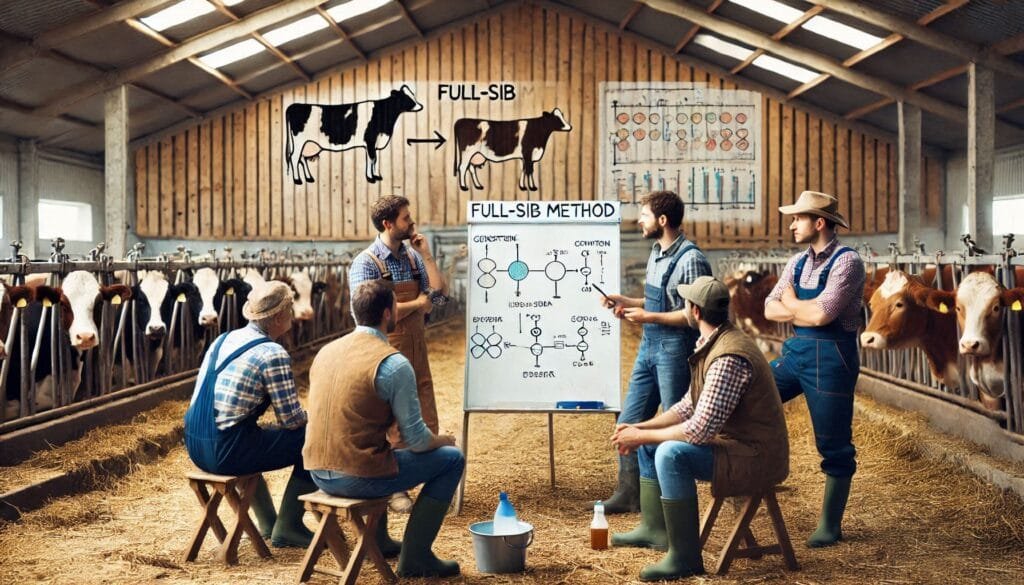Teratology in Farm Animals

Introduction to Teratology
Teratology is the study of abnormal development in organisms, particularly focusing on congenital anomalies. In farm animals, these anomalies can significantly impact animal health and agricultural productivity. Understanding the causes and effects of teratogenic influences is crucial for farmers, veterinarians, and researchers.
What Are Congenital Anomalies?
Congenital anomalies are structural or functional abnormalities that occur during fetal development. They can affect various body systems and may lead to severe health issues or even death. In farm animals, these anomalies can reduce productivity and affect animal welfare.
Causes of Teratogenic Effects
Several factors contribute to teratogenic effects in farm animals. These include toxic plants, infectious agents, environmental factors, and maternal health.
Toxic Plants
Many plants are known to cause teratogenic effects when ingested by pregnant livestock.
Common Toxic Plants
- Lupinus spp. (Lupines)
- Lupines contain alkaloids, such as anagyrine, which can cause “crooked calf disease.” This condition leads to skeletal deformities like joint contractures and cleft palates if ingested during critical gestational periods (40-70 days). You can read more about this condition here.
- Conium maculatum (Poison Hemlock)
- This plant can cause severe deformities in cattle and other livestock. The neurotoxic alkaloids present in poison hemlock affect fetal development during early gestation. More information is available here.
- Nicotiana tabacum (Tobacco)
- Tobacco consumption by pregnant animals can lead to various skeletal defects. The teratogenic effects are linked to the nicotine content.
Infectious Agents
Infectious diseases are another significant cause of congenital anomalies in farm animals.
Key Viral Infections
- Bovine Viral Diarrhea Virus (BVDV)
- BVDV can lead to various congenital defects in cattle, including cerebellar hypoplasia and ocular defects. Infection during early gestation poses the highest risk. For more details on BVDV, check out this article here.
- Brucella spp.
- Brucellosis can cause reproductive issues in livestock, including abortion and stillbirths. More information can be found here.
- Porcine Reproductive and Respiratory Syndrome Virus (PRRSV)
- PRRSV affects pigs and can lead to congenital defects if sows are infected during pregnancy.
Environmental Factors
Environmental conditions play a vital role in fetal development. Factors such as maternal nutrition, exposure to chemicals, and physical stressors can contribute to teratogenesis.
Nutritional Deficiencies
- Vitamin A Deficiency
- A lack of vitamin A during pregnancy can lead to eye defects and skeletal issues in offspring.
- Folic Acid Deficiency
- Insufficient folic acid intake is linked to neural tube defects in various species.
Maternal Health
The overall health of the mother significantly impacts fetal development. Conditions such as obesity or metabolic disorders can increase the risk of congenital anomalies.
Implications for Animal Health
The consequences of teratogenic effects extend beyond individual animals; they impact entire herds and farming operations.
Economic Impact
Congenital anomalies can lead to increased veterinary costs, reduced productivity, and lower market value for affected animals.
Animal Welfare Concerns
Animals born with severe deformities may experience pain or suffering, raising ethical concerns regarding their treatment and care.
Prevention Strategies
Preventing teratogenic effects requires a multifaceted approach involving education, management practices, and veterinary care.
Educating Farmers
Farmers should be aware of toxic plants and their effects on livestock. Resources like the University of California Agriculture and Natural Resources provide valuable information on plant toxicity.
Monitoring Nutrition
Ensuring that pregnant animals receive a balanced diet rich in essential vitamins and minerals is crucial for fetal health.
Nutritional Guidelines
- Regular Veterinary Check-ups: Regular health assessments help identify nutritional deficiencies early.
- Supplementation: Providing supplements as needed can prevent deficiencies linked to congenital anomalies.
Managing Environmental Risks
Farmers should assess their environments for potential teratogenic risks:
- Chemical Exposure: Limit exposure to harmful chemicals during critical gestational periods.
- Stress Reduction: Implement stress-reducing practices such as proper housing and handling techniques.
Research Advances in Teratology
Ongoing research continues to uncover new insights into teratology in farm animals. Scientists are exploring genetic factors that may predispose certain breeds to congenital anomalies.
Genetic Studies
Genetic studies aim to identify markers associated with increased susceptibility to teratogenic effects. Understanding these markers can help breeders make informed decisions about animal selection.
Future Directions
As research advances, new prevention strategies will emerge, enhancing animal welfare and productivity in farming operations.
Conclusion
Teratology is a vital field of study that addresses congenital anomalies in farm animals. By understanding the causes—such as toxic plants, infectious agents, environmental factors, and maternal health—farmers can implement effective prevention strategies. Education, proper nutrition, and environmental management play crucial roles in safeguarding the health of livestock.
By focusing on these aspects, we can improve animal welfare while ensuring sustainable agricultural practices for future generations.
More from Veterinary Anatomy:
Microscopy Techniques






Responses